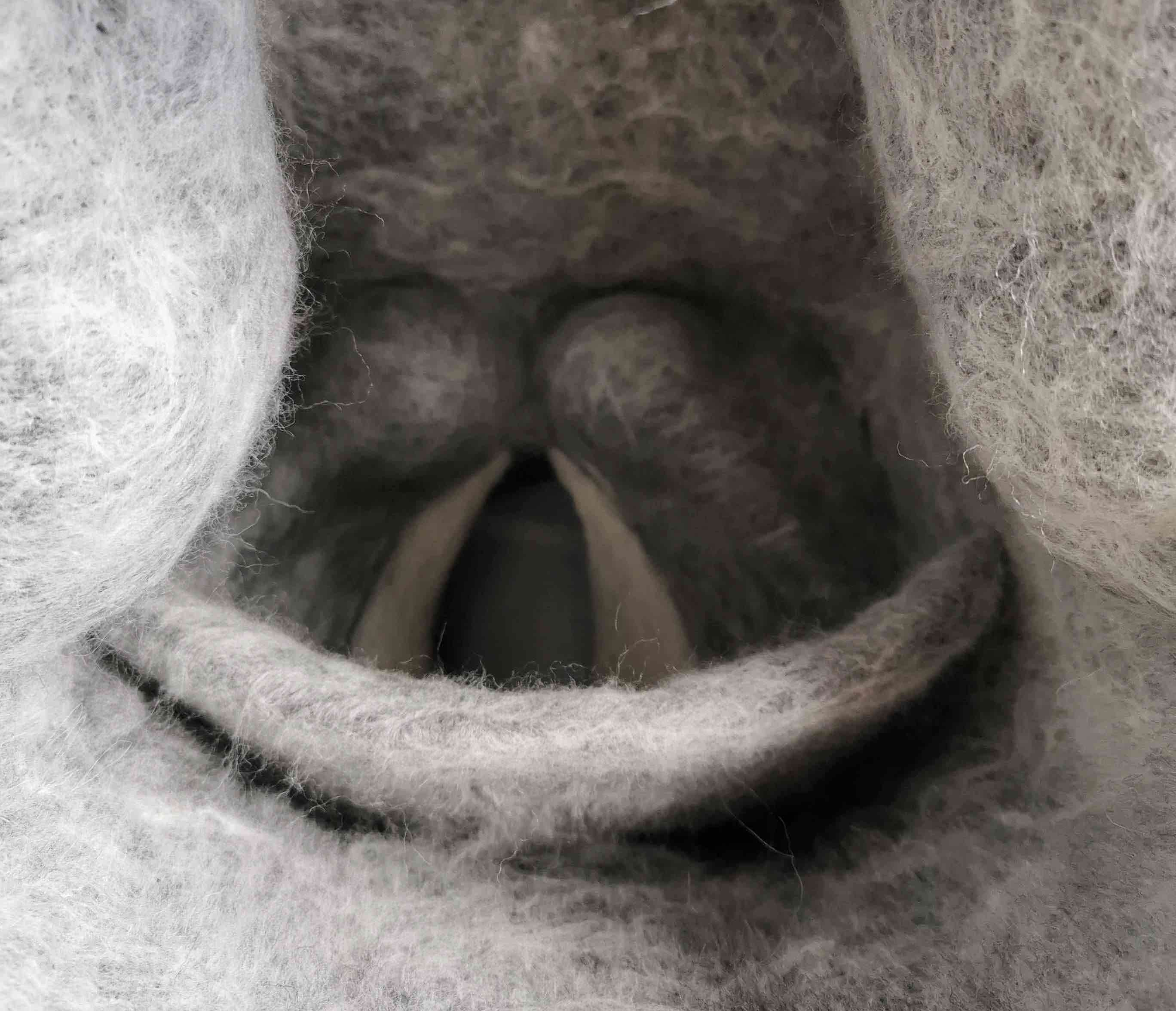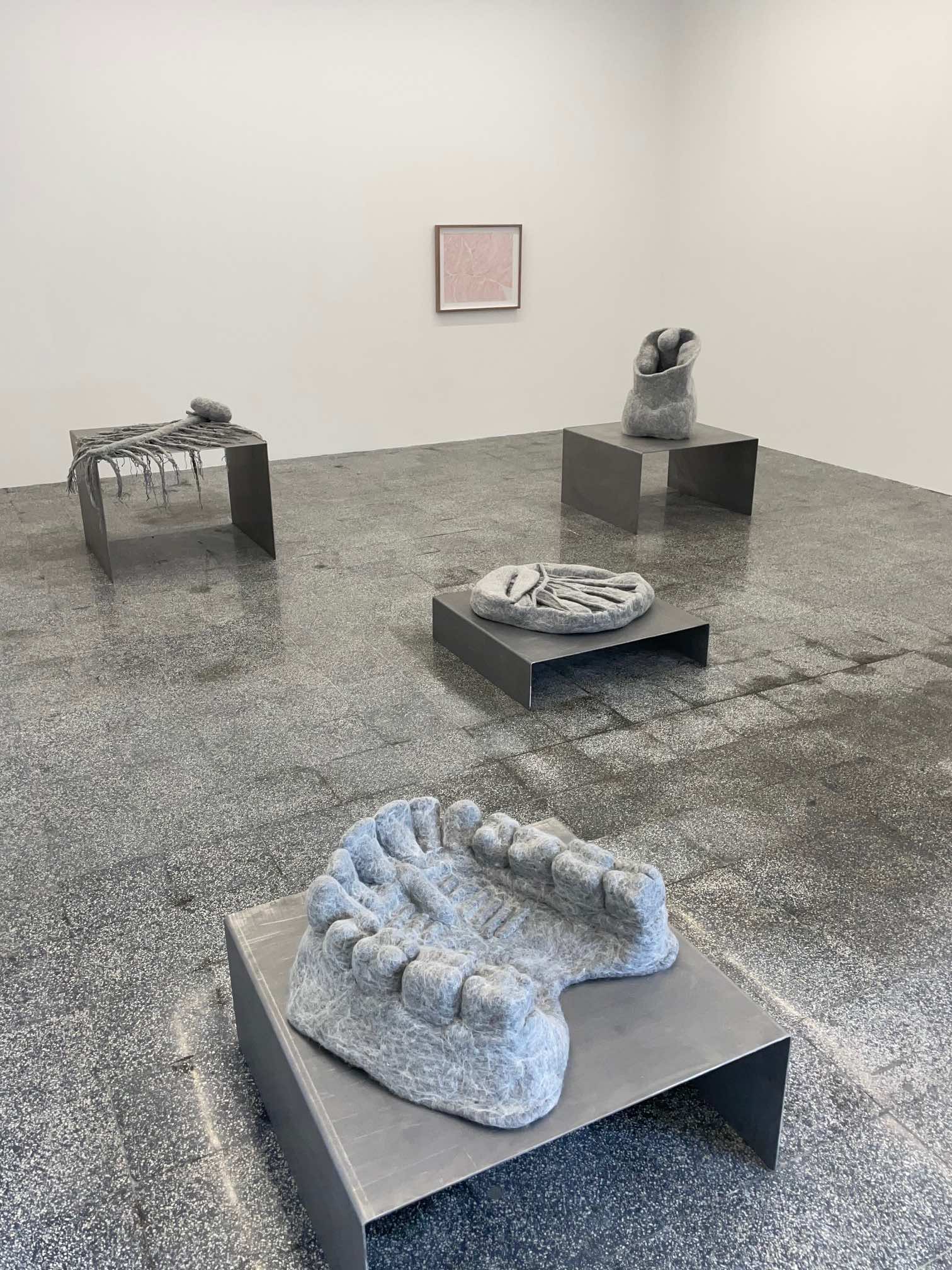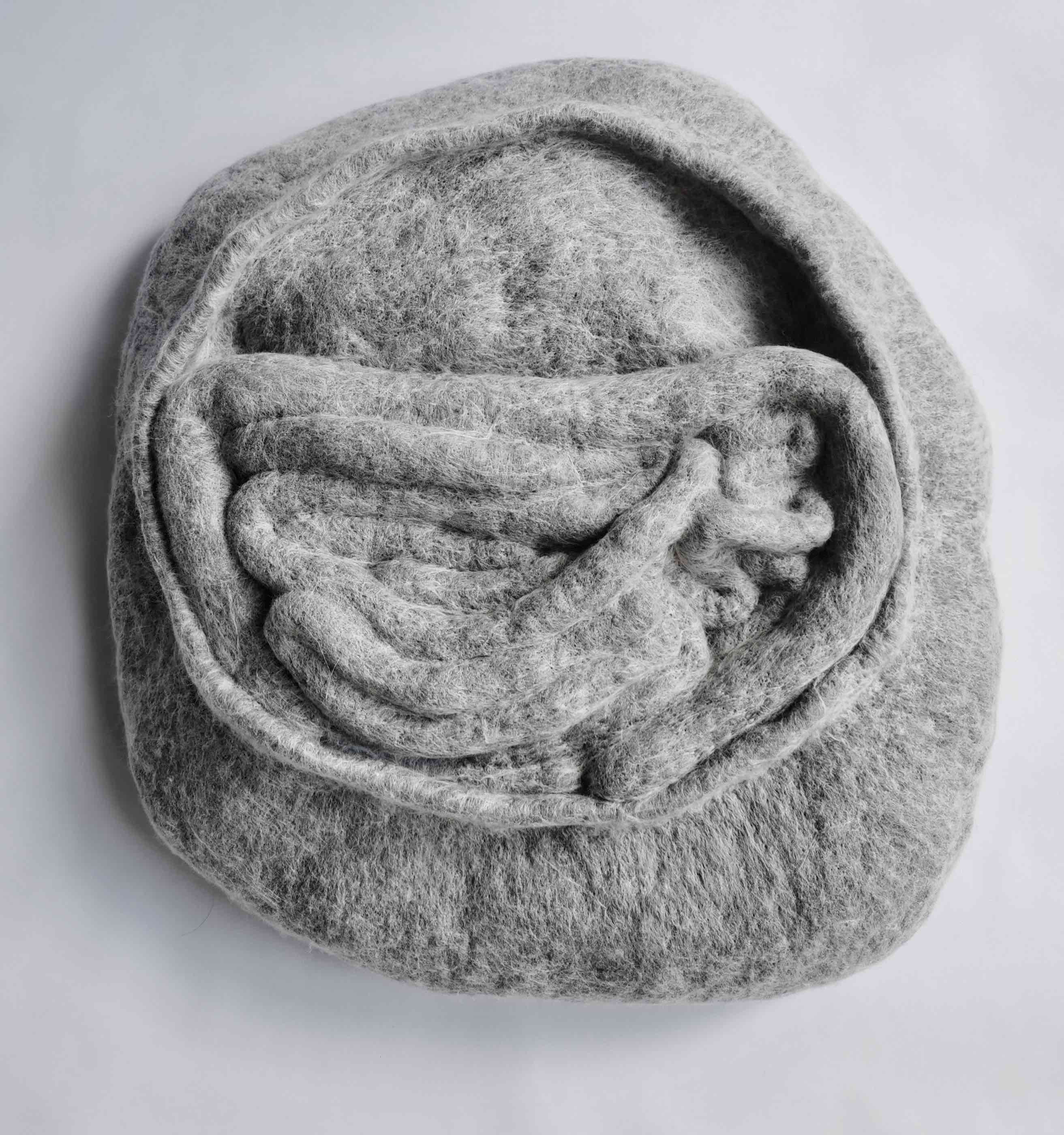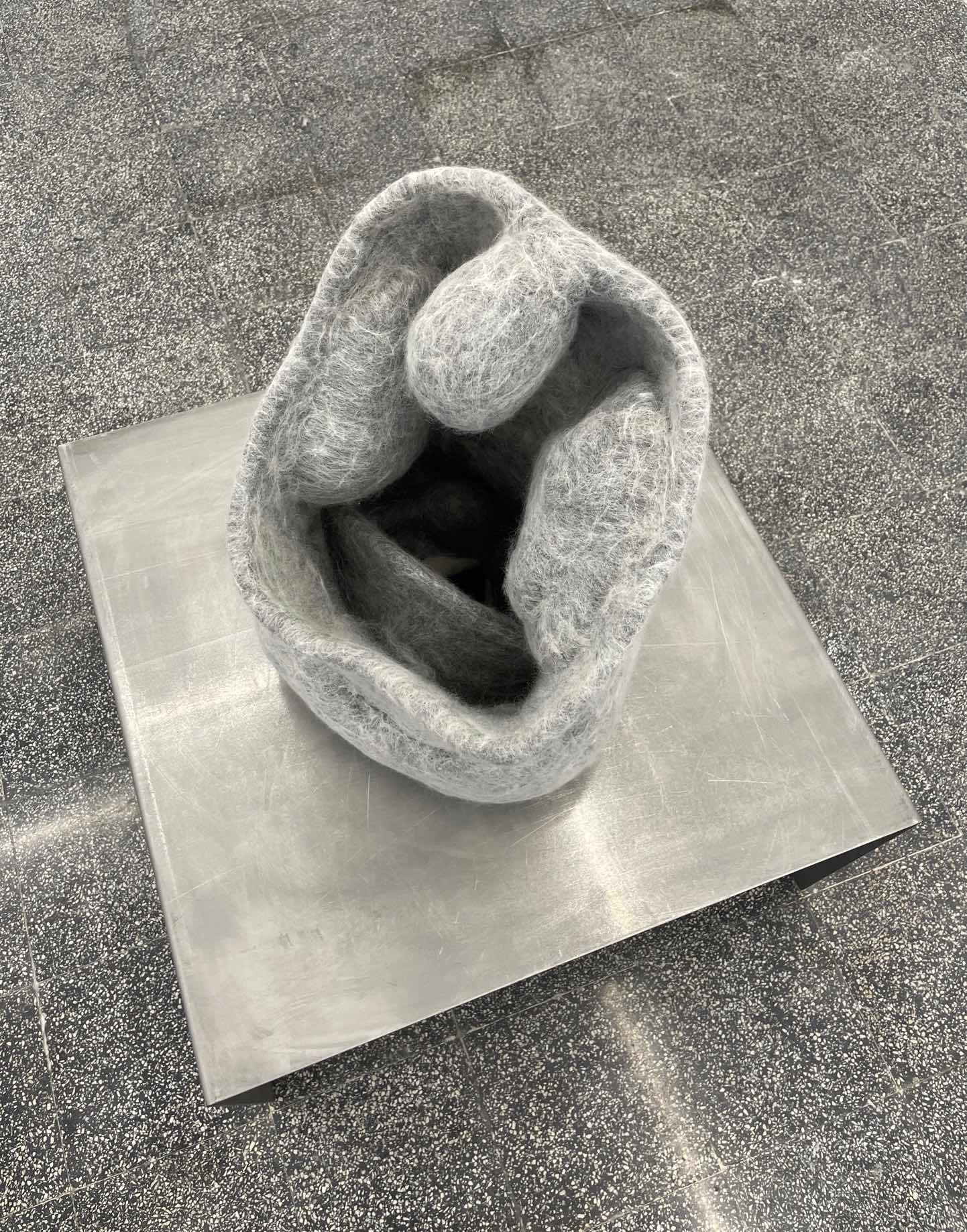
Review
“Do No Harm”: Soft Bodies by Paloma Rosenzweig
by Mariel Vela
At Bóca
Reading time
5 min
Six bodies of wool are lying down, each one on its own metallic bed: intestine, palate and teeth, throat, brain, and rib cage. The material from which the pieces have been made invites a sentimental, gloveless, non-clinical touch. At the back, there’s a red-ink drawing titled Fibras 1, separated from the rest. The image resembles a gap mediating all of them; the tissue that has brought them together. The bodies lie down with the placidity of objects dreaming that they are something else. They have been freed from performing functions that are now only vestiges of speech, digestion, and thought. Cuerpos suaves (“Soft Bodies”) by Paloma Rosenzweig is the first part of her essay No hacer daño (“Do No Harm”), a title that comes from the Hippocratic Oath taken by doctors.
The first anatomical theaters were built around the 16th century with the aim of incorporating the practice of dissecting human and animal corpses into the teaching of medicine. The soul is the form of the organized body, says Aristotle. The fullness of a system’s functions is what differentiates a living organism from a corpse. It could be said that by themselves entrails and teeth do not have a soul or a conscience. A disordered body then belongs to the mysterious plane of the non-living; the world of things, plants, and animals.

A tour of the exhibition allows us to pause before the image of each organ and bone. In the chapter “¿Cómo hacerse un cuerpo sin órganos?” (“How Do You Make Yourself a Body without Organs?”) one encounters a description of the paranoid body of Miss X, whose organs do not cease to be attacked by influences, but also do not cease to be reconstituted by external energies. “Miss X claims that she no longer has a brain or nerves or chest or stomach or guts. All she has left is the skin and bones of a disorganized body.”*1 For Deleuze and Guattari, the body without organs has already been set in motion since the manifestation of visceral weariness: the symptom of that need to empty oneself out in order to be populated by nothing but intensities.
In the center one finds Tripas (“Guts”), with a soft topography, wrapped in themselves. I focus on my own, resting on the pelvis, and I remember how they sometimes swell, although never as much as for Cynthia or Maye, who suffer from chronic colitis. Do Paloma Rosenzweig’s soft bodies ever get sick? Throughout quarantine, I took great interest in the immobile choreographies that I practiced every day. I could spend hours lying down, staring up at a groove in the ceiling. I would sit on one leg until my circulation was cut off, and I would contemplate, for several minutes, the bubbles that formed in a glass of water. My lethargy was not oriented toward any kind of intellectual revelation. Rather, I experienced it as a defiant viscosity, my little metabolic protest, a digestive rebellion while reading texts like A Thousand Plateaus: Capitalism and Schizophrenia. There can be great passion in stillness.

Almost to the side of the guts one finds the Dientes (“Teeth”). I think of the animal sincerity of a bite compared to the electrical sophistication of the brain, placed toward the back of the exhibition. Teeth invoke such actions as handling young and chewing: our condition as mammals. Upon opening any book on anatomy or physiology one learns that we still have within us primitive appendages and vestigial organs. A statement by Inés Arredondo comes to mind: “The contact with ‘something’ beyond the senses shook her sharply, not in the important nerves, but in the minor ones that finish their run in the skin.”*2
The cat’s fur curls only when she concentrates on watching birds through the window. Lucrecia and I speculate on the size of her brain and heart in relation to ours. Faced with these exercises of tenderness and observation, I remember the experiment made infamous by teenage movies and TV series from the U.S.: the dissection of a frog, of proportionally small organs compared to the human scale. Galen was a surgeon in the Roman Empire and the first to use vivisection. The animality of these pieces made of wool leads us to think about others’ vulnerability before searches conducted in the name of medical progress.
At the end of the tour, there was no one around to see me and so I chose to run my hand down the inside of the throat, titled “Garganta,” and between the tonsils. Anabel’s tonsils are prone to infection and she must lie down so that Leire can draw a cross with her eyes and give her an injection. She’s the only one who dares to do it.
Translated to English by Byron Davies

*1: Deleuze, Gilles, Félix Guattari. A Thousand Plateaus: Capitalism and Schizophrenia. Translated by Brian Massumi. University of Minnesota Press, 1987. p. 150.
*2: Arredondo, Inés. Mariana. Material De Lectura UNAM. Mexico City: UNAM, 2008, p. 14. Translation from: “El contacto con ‘algo’ más allá de los sentidos la estremeció agudamente, no en los nervios importantes, sino en los nerviecillos menores que rematan su recorrido en la piel.”
Published on June 17 2021